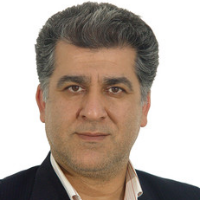Mineralization, ore mineral chemistry and sulfur stable isotopes at the Chaldaq gold prospect (north Takab): evidence for gold formation mechanism
The Takab-Angouran ore field, one of the Iran’s largest gold districts, is located in northwestern Zagros and belongs to the northwestern part of the Sanandaj-Sirjan Zone. This area has a dominant NW-SE structural trend and is spatially associated with the Sanandaj-Sirjan zone. Its geological and petrological characteristics seem to have closer affinities to the Central Iran zone. There are no chronological data on the ultramafic rocks or associated amphibolites, granulites and calc-silicates of the Takab area and the petrogenesis of the ultramafic rocks and their tectonic relations with other parts of the metamorphic complex are unclear. A Neoproterozoic-Lower Cambrian age for the protoliths of Takab-Angouran ore field seems likely, in view of comparable lithology, stratigraphy and geochronology with the Central Iran zone.The Chaldaq gold prospect is located in the Takab-Angouran ore field, NW Iran, within Iman Khan NW-trending anticline. The rock units at the mining area mainly consist of Precambrian sequence (Iman Khan schist, Chaldaq limestone and Zarshuran black shale) overlain by Cambro-Ordovician limestone and Oligo-Miocene Qom Formations (Mehrabi et al., 1999). The gold mineralization in the Chaldaq prospect is hosted by Chaldaq carbonaceous sedimentary rocks. Two major sets of faults which were recognized by Mehrabi et al., 1999 at the Zarshuran mine are: 1) northwest (310–325) and 2) southwest (255–265). Herein, we report on the textural, paragenetic relationships, mineral chemistry and sulfur isotopes of the Chaldaq prospect. This study is focused on: (1) documenting the chemical composition of different sulfides, (2) determining the chemical state of gold in iron sulfides, (3) determining the sulfur activity, and (4) source of sulfur.
About 70 rock samples were collected from various parts of the deposit for determinations of mineralogy, mineral texture, mineral chemistry and sulfur isotope. The polished thin sections were carbon coated and analyzed on a Camera SX100 electron microprobe at the Iranian Mineral Processing Research Center (IMPRC), Karaj. The detection limits for major and minor elements are approximately 0.05 and 0.01 wt.%, respectively. Sulfur isotope analyses were conducted on 0.05 g of a 200-mesh sized of pyrite and realgar which were handpicked and checked under a binocular microscope to ensure purity of >98%. Each sample was reacted with Cu2O powder to produce SO2. The SO2 gas was collected and purified, and followed by S isotopic analysis using a MAT252 mass spectrometer at stable isotope laboratory of the University of Arizona. The δ34S values were reported relative to Vienna Cañon Diablo Troilite (VCDT), and analytical precision is ±0.2‰.
Based on field and petrographic observations, three mineralization stages including diagenetic, hydrothermal (early-ore, main-ore and late-ore substages), and supergene stages were identified at the Chaldaq deposit. At least six types of pyrite and arsenian pyrite were recognized at the Chaldaq deposit. On the basis of EPMA results, gold with 10 to 80 ppm Au content occurs as solid solution (Au+)in arsenian pyrite [(Fe2+As3+)S2Au2.S0]. Various studies have documented that gold in the primary ores of sediment-hosted gold deposits is largely hosted by arsenian pyrite, and that gold in occurs as a substituting cation in the form of solid solution (Au+) and/or as nanoparticles of native gold (Au0) (Cook and Chryssoulis, 1990; Fleet and Mumin, 1997; Reich et al., 2005). Au– and Au3+ have also been suggested to occur as solid solution in pyrite (Arehart et al., 1993; Li et al., 2003). The understanding of the chemical state of gold in iron sulfides is important for deep understanding of gold depositional mechanism in sediment-hosted gold deposits. Main-ore substage sulfide minerals has δ34S values ranging from 3.5 to 6.5 ‰ (avg. 5‰, n=6). The Fe content of sphalerites from the main-ore indicates that sphalerite precipitated from relatively low fS2 fluid. Based on all evidence, it can be said that sulfur mineralization of the Chaldaq prospect has been formed by the performance of oxidized hydrothermal fluid on organic-bearing carbonaceous host rocks (at the Chaldaq unit) and the systematic subtraction of H2S reductive species from that environment. Considering the low temperature (fS2 between -14 to -16) and the acidic to neutral pH (presence of kaolinite and illite) for the main-ore stage of hydrothermal mineralization in the Chaldaq prospect, probably the major contribution of sulfur is in the form of H2S.
- حق عضویت دریافتی صرف حمایت از نشریات عضو و نگهداری، تکمیل و توسعه مگیران میشود.
- پرداخت حق اشتراک و دانلود مقالات اجازه بازنشر آن در سایر رسانههای چاپی و دیجیتال را به کاربر نمیدهد.



